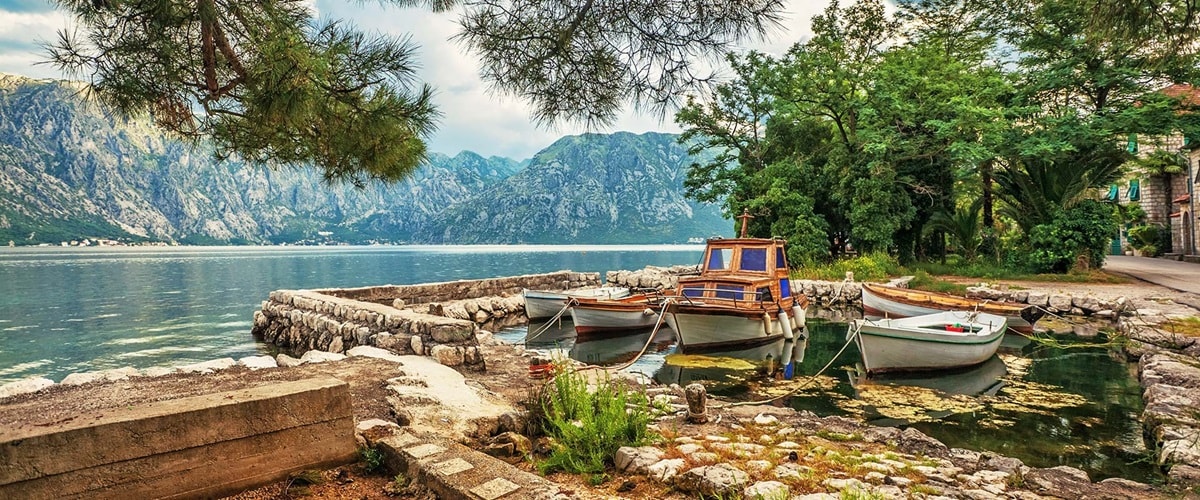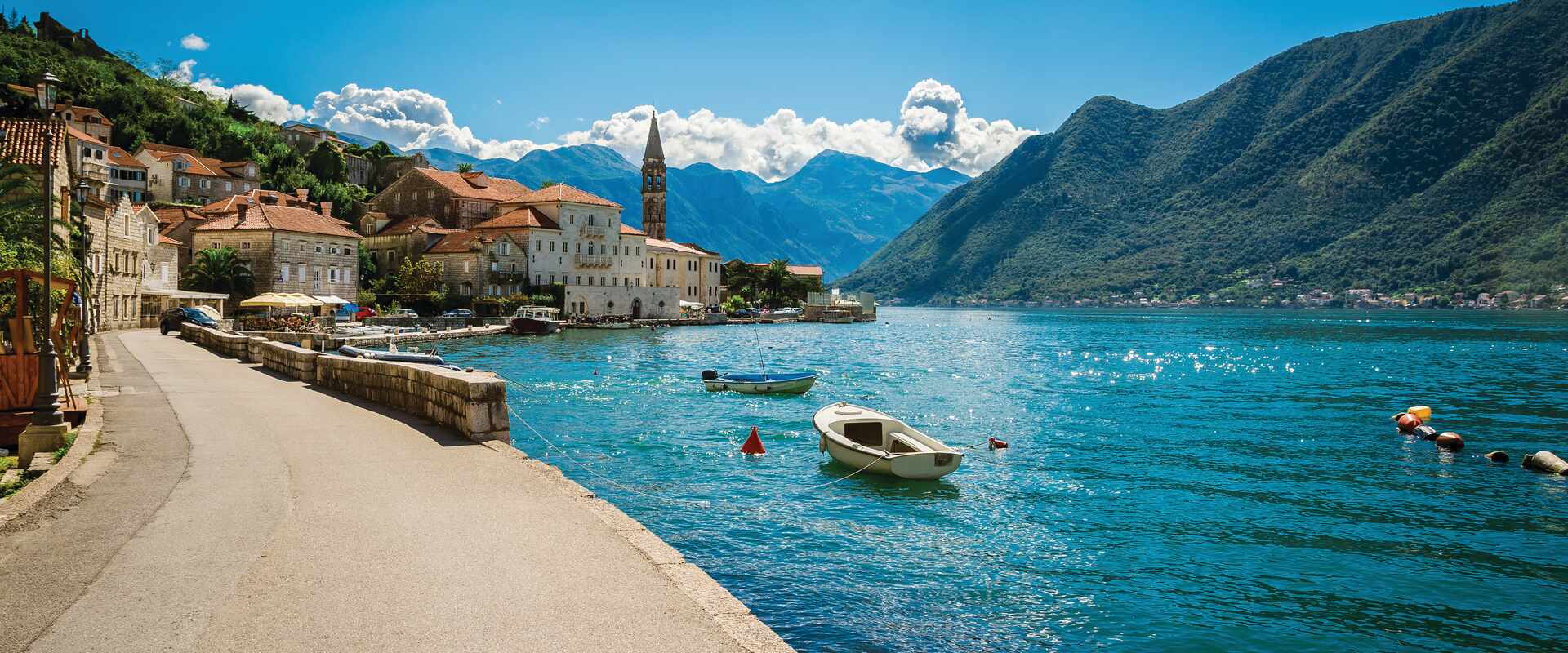Kotor | Montenegro
Nestled between imposing mountains and shimmering turquoise waters, the picturesque port of Kotor is effortlessly at one with its setting. Its remarkably preserved Old Town is a medieval maze of secluded squares, cobbled alleyways, palaces, museums and churches.
Nestled between imposing mountains and shimmering turquoise waters, the picturesque port of Kotor is effortlessly at one with its setting. Its remarkably preserved Old Town is a medieval maze of secluded squares, cobbled alleyways, palaces, museums and churches. Much of the World Heritage-listed Old Town and the fortified walls above it were built by the Venetians, who ruled over Kotor for nearly 400 years. Down by the water, sleek yachts line the harbour and lively restaurants spill out onto the sun-kissed pavement. The bay itself has a fjord-like feel, thanks to the sheer cliffs that rise dramatically from the tranquil waters. Unlike Norway and its mighty fjords, Montenegro offers a warm Mediterranean climate that is ideal for cruising.
Must-Sees

Our Lady of the Rocks

Kotor's Old town

The Bay of Kotor
General Information
General Information
Country: Montenegro
Currency: Euro (EUR)
International Dialling Code: +382
Local Time: (GMT+1)

Population
Language
Language: Montenegrin is the Balkan state’s official language. However, Bosnian, Croatian, Serbian and Albanian all remain languages in official use in Montenegro.
Useful phrases: Zdravo, pronounced ‘zdrah-voh’ (hello); molim, pronounced ‘mo-leem’ (please); hvala, pronounced ‘hvah-lah’ (thank you); dovidenja, pronounced ‘doh-vee-dje-nyah’ (goodbye); dobro jutro, pronounced ‘dob-ro yoo-tro’ (good morning); dobro vece, pronounced ‘dob-ro ve-che’ (good evening)
Culture
Montenegrin cuisine: With Kotor being on the sea, don’t miss the opportunity to enjoy a delicious risotto blackened with fresh ink from squid or cuttlefish. For a more classical dish, Buzara is a garlicky, tomato-based seafood stew made with grilled prawns and shrimp gently cooked in red wine. Another popular dish is Njeguski steak – a tender veal or pork schnitzel filled with local Njegusi prosciutto and cheese.
Local wines:Montenegro is a prime spot for wine production, thanks to its fertile land and unique microclimate, which makes it one of the sunniest spots on the Adriatic all year round. From their local vranac wines to classic chardonnays and merlots, Montenegro produces a tasty array of vintages that are not to be missed.
Fascinating fact:Cats are very much a part of the medieval Old Town of Kotor. As a major trading port for centuries, it’s said that as ships from around the world docked, the cats aboard escaped, populating the ancient town with a mixed bag of furry felines. Now very much apart of daily life, they even have their own museum, The Cat Museum (Museo del Gatto di Cattaro).



